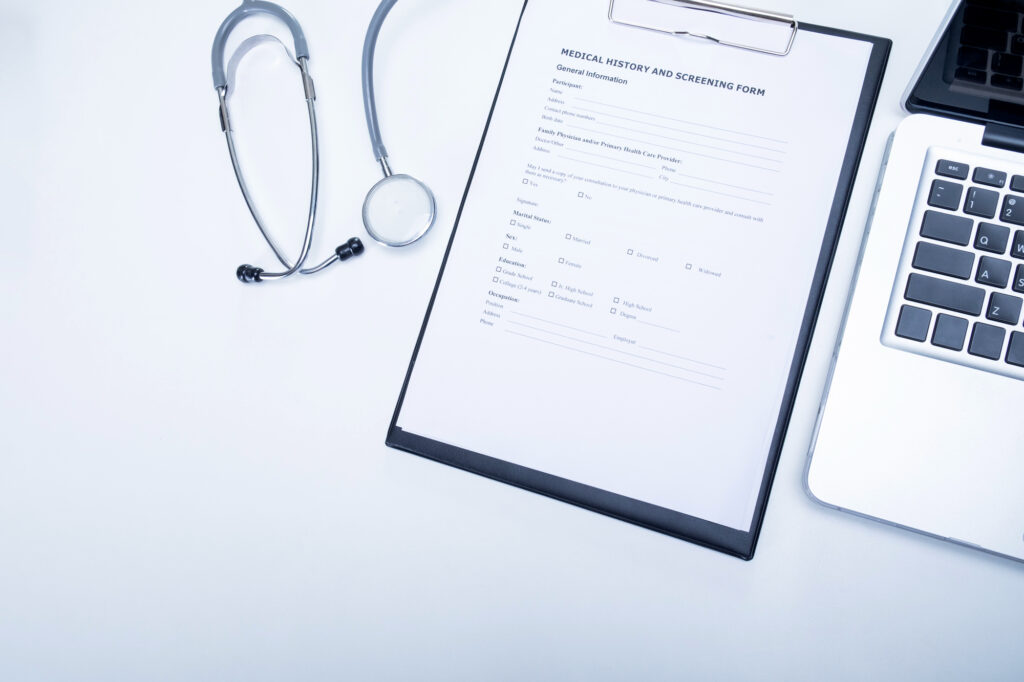
What is Medical Billing? A Complete Guide for Healthcare Providers
If you are a healthcare provider, you know how important it is to get paid for the services you offer.
But getting paid is not as simple as sending an invoice to the patient or the insurance company. You need to follow a complex process called medical billing, which involves coding, submitting, and tracking claims with various payers.
In this blog post, we will explain everything you need to know about medical billing.
What is Medical billing?
Medical billing is the process of submitting and following up on claims with health insurance companies to receive payment for healthcare services provided by a physician or other healthcare provider. Medical billing is an essential part of healthcare revenue cycle management, which ensures that healthcare organizations get paid for the services they provide.
Medical billing can be a complex and challenging task, especially with the ever-changing rules and regulations of the healthcare industry. It requires a lot of attention to detail, accuracy, and efficiency. It also involves a lot of communication and coordination between different parties, such as patients, healthcare providers, insurance companies, and government agencies.
Medical Billing Types
There are two main types of medical billing: professional billing and institutional billing.
Professional billing
Professional billing, also known as physician billing, is responsible for billing claims for outpatient and inpatient services performed by physicians, suppliers, and other non-institutional providers. Professional billers use the CMS-1500 form or the 837-P electronic format to submit claims to payers.
Professional billers often perform both billing and coding tasks, and may also handle charge entry and collection of payments from insurers and patients.
Institutional billing
Institutional billing, on the other hand, is responsible for billing claims for services provided in hospitals, skilled nursing facilities, and other institutions. Institutional billers use the UB-04 form or the 837-I electronic format to submit claims to payers.
Institutional billers usually do not perform coding tasks but may perform collections or other administrative duties1. Institutional billers deal with more complex and varied charges, such as physicians’ fees, equipment and supplies, laboratory services, radiology services, and other charges.
Medical Coding vs. Medical Billing
Medical coding and medical billing are two related but distinct processes in healthcare revenue cycle management. They both involve translating healthcare services into standardized codes and formats, but they have different purposes and roles.
Medical coding - the process of assigning codes to the diagnoses, procedures, and services performed by a healthcare provider during a patient encounter.
These codes are based on international classification systems, such as the International Classification of Diseases (ICD) and the Current Procedural Terminology (CPT). Medical coding ensures that healthcare services are accurately documented and reported for statistical, research, and reimbursement purposes.
Medical billing - the process of using the codes generated by medical coding to create and submit claims to insurance companies for payment.

Medical billing also involves verifying the patient’s insurance eligibility and coverage, collecting copayments and deductibles, preparing patient bills, managing payments and reimbursements, resolving denials and rejections, and following up on unpaid claims.
Medical coding and medical billing are closely connected, as the quality and accuracy of medical coding directly affect the success and efficiency of medical billing. However, they require different skills and knowledge. Medical coders need to have a thorough understanding of anatomy, physiology, medical terminology, coding systems, and coding guidelines. Medical billers need to have a good knowledge of insurance policies, billing procedures, claim forms, payment systems, and collection methods.
Responsibilities of Medical Coders
Medical coders are responsible for reviewing the medical charts and records of patients who have received healthcare services from a provider. They extract the relevant information from the documentation and translate it into standardized codes that represent the diagnoses, procedures, and services performed.
Medical coders need to be familiar with two main types of codes: procedure codes and diagnosis codes.
- Procedure codes describe what was done to the patient during the encounter, such as tests, surgeries, or treatments.
- Diagnosis codes describe why the patient needed the service, such as their condition or illness.
Procedure Code System
The most common procedure code system used in the United States is the Current Procedural Terminology (CPT), which is maintained by the American Medical Association (AMA). CPT codes are five-digit numeric codes that are divided into six categories: evaluation and management (E/M), anesthesia, surgery, radiology, pathology and laboratory, and medicine.
Diagnosis Code System
The most common diagnosis code system used in the United States is the International Classification of Diseases (ICD), which is maintained by the World Health Organization (WHO). ICD codes are alphanumeric codes that are divided into 21 chapters based on body systems or diseases. The current version of the ICD used in the United States is ICD-10-CM (Clinical Modification), which has over 70,000 codes.
Medical coders need to follow specific rules and guidelines when assigning codes to ensure consistency and accuracy. They also need to check for any modifiers or indicators that may affect the reimbursement or reporting of the codes. For example, some codes may require additional documentation or authorization from the insurance company before they can be billed.
Medical coders play an important role in ensuring that the healthcare services provided are accurately documented and reported for statistical, research, and reimbursement purposes. They also facilitate communication between healthcare providers and insurance companies by using a common language of codes.
Responsibilities of Medical Billers
Medical billers are responsible for using the codes generated by medical coders to create and submit claims to insurance companies for payment. They also handle all aspects of communication and coordination between patients, healthcare providers, and insurance companies regarding billing issues.
Medical billers need to perform several tasks before they can generate a claim, such as:
- Collecting the necessary information for billing, such as patient demographics, medical history, insurance information, and encounter forms
- Verifying the patient’s insurance eligibility and coverage, such as benefits, deductibles, copayments, and coinsurance
- Obtaining any preauthorization or referral required by the insurance company for certain services or procedures
- Generating and submitting the claim to the insurance company using the appropriate claim form and format, such as paper or electronic
Medical billers also need to perform several tasks after they submit a claim, such as:
- Tracking the status of the claim and ensuring that it is processed and paid in a timely manner
- Posting the payments received from the insurance company and the patient to the appropriate accounts
- Preparing and sending bills to the patients for any remaining balance or coinsurance
- Managing any payments or reimbursements received from the patients, such as checks, credit cards, or online payments
- Resolving any denials, rejections, or errors in the claim by contacting the insurance company or the provider and making any necessary corrections or appeals
- Following up on any unpaid or outstanding claims by contacting the insurance company or the patient and taking any appropriate collection actions
Medical billers play an important role in ensuring that healthcare providers receive payment for the services they provide. They also ensure that patients are billed correctly and fairly for their share of the cost. They also maintain accurate and complete records of all billing transactions and activities.
The Medical Billing Process
The medical billing process is the series of steps that medical billers follow to create and submit claims to insurance companies and receive payment for healthcare services. The medical billing process can be divided into two main stages: front-end billing and back-end billing.
Front-End Billing
Front-end billing is mainly related to patient-facing tasks, such as registration, verification, authorization, and collection. Front-end billing aims to ensure that the patient’s information is correct and complete, that their insurance eligibility and coverage are verified and authorized, and that their copayment or deductible is collected at the time of service.
Back-End Billing
Back-end billing is mainly focused on claims management and reimbursement, such as charge entry, claim submission, payment posting, denial management, and A/R collections. Back-end billing aims to ensure that the provider’s charges are accurately coded and documented, that their claims are submitted and paid in a timely manner, and that their payments are reconciled and collected.
The medical billing process can vary depending on the type of service, provider, payer, or facility involved. However, a typical medical billing process can be summarized in the following steps:
1. Pre-registration
The patient contacts the provider to schedule an appointment or service. The provider collects basic information from the patient, such as name, date of birth, address, phone number, reason for visit, and insurance information.
2. Registration
The patient arrives at the provider’s office or facility for the service. The provider verifies the patient’s identity and confirms or updates their information. The provider also obtains any necessary consent forms or documents from the patient.
3. Insurance eligibility verification
The provider checks with the patient’s insurance company to verify their eligibility and coverage for the service. The provider also determines if any preauthorization or referral is required by the payer for certain services or procedures.
4. Preauthorization
The provider obtains any preauthorization or referral required by the payer for certain services or procedures. The provider submits a request to the payer with supporting documentation and waits for approval or denial.
5. Point of service collections
The provider collects any copayment or deductible required by the payer from the patient at the time of service. The provider also informs the patient of their estimated coinsurance or balance due after insurance payment.
6. Encounter form generation
The provider performs the service or procedure for the patient and documents it in their medical record. The provider also generates an encounter form (also known as a superbill) that lists all the services performed and their corresponding codes.
7. Checkout
The patient completes their visit and leaves the provider’s office or facility. The provider schedules any follow-up appointments or referrals for the patient if needed.
8. Communication with physicians
The medical biller communicates with the physician or other healthcare provider who performed the service to review their documentation and encounter form. The medical biller ensures that all services are accurately coded and documented according to coding guidelines and payer policies.

9. Charge entry
The medical biller enters all charges from the encounter form into a billing software system. The medical biller also reviews all charges for accuracy and completeness before submitting them to insurance companies.
10. Claim generation
The medical biller generates a claim from the charges entered in the billing software system. A claim is a request for payment from an insurance company for healthcare services provided by a provider.
11. Claim scrubbing
The medical biller scrubs (or checks) the claim for any errors, omissions, inconsistencies, or discrepancies that may cause it to be denied or rejected by the insurance company. The medical biller corrects any errors found in the claim before submitting it to avoid delays or denials.
12. Claim submission
The medical biller submits (or sends) the claim to the insurance company using either paper (mail) or electronic (EDI) methods. Electronic claims are faster and more efficient than paper claims, as they can be processed and paid faster by the insurance company.
13. Claim tracking
The medical biller tracks (or monitors) the status of the claim after it is submitted to the insurance company. The medical biller can use various methods to track the claim, such as online portals, phone calls, or electronic remittance advice (ERA).
14. Claim adjudication
The insurance company adjudicates (or evaluates) the claim and determines whether to pay, deny, or partially pay the claim based on the patient’s eligibility, coverage, and benefits. The insurance company also applies any adjustments, discounts, or contractual allowances to the claim.
15. Payment posting
The medical biller posts (or records) the payment received from the insurance company to the provider’s account. The medical biller also reconciles (or matches) the payment with the claim and verifies that the payment amount is correct and complete.
16. Patient payments
The medical biller prepares and sends a bill to the patient for any remaining balance or coinsurance after the insurance payment. The medical biller also collects any payments or reimbursements received from the patient and posts them to the provider’s account.
17. Denial management
The medical biller reviews any denials or rejections received from the insurance company and determines the reason and validity of the denial. The medical biller also takes any necessary actions to resolve the denial, such as correcting errors, providing additional information, or filing an appeal.
18. A/R collections
The medical biller follows up on any unpaid or outstanding claims by contacting the insurance company or the patient and taking any appropriate collection actions, such as sending reminders, making phone calls, or hiring a collection agency.
19. Credit balance
The medical biller reviews any credit balances in the provider’s account and determines if they are due to overpayments, refunds, or adjustments. The medical biller also processes any credit balances by issuing refunds, applying credits, or writing off balances.
The medical billing process is a complex and lengthy process that requires a lot of attention to detail, accuracy, and efficiency. It also requires a lot of communication and coordination between different parties, such as patients, healthcare providers, and insurance companies.
Benefits of Medical Billing for Healthcare Organizations
Medical billing is not only a necessary process for healthcare organizations to receive payment for their services, but also a valuable process that can bring many benefits to their business performance and growth.
Some of the benefits of medical billing for healthcare organizations are:
Increased revenue
Medical billing can help healthcare organizations increase their revenue by ensuring that they capture and bill all the services they provide, that they receive the correct and full payment for their claims, and that they collect all the payments due from the insurance companies and the patients.
Reduced costs
Medical billing can help healthcare organizations reduce their costs by minimizing errors, rejections, and denials in their claims, by reducing administrative and operational expenses, and by improving cash flow and working capital.
Improved efficiency
Medical billing can help healthcare organizations improve their efficiency by streamlining and automating their billing processes, by reducing manual work and paperwork, and by enhancing communication and coordination between different parties.
Enhanced quality
Medical billing can help healthcare organizations enhance their quality by improving their documentation and coding accuracy and compliance, ensuring that their services are aligned with the patient’s needs and expectations, and by providing better customer service and satisfaction.
Increased competitiveness
Medical billing can help healthcare organizations increase their competitiveness by enabling them to offer more services and options to their patients, by expanding their network and contracts with insurance companies, and by staying updated with the latest trends and regulations in the healthcare industry.
Agency that Regulates Medical Billing Processes
Medical billing is a highly regulated process that involves many rules and regulations from various agencies at the federal, state, and local levels. These agencies oversee and enforce different aspects of medical billing, such as coding standards, billing procedures, claim forms, payment systems, privacy and security, fraud and abuse, and quality improvement.
Some of the major agencies that regulate the medical billing process are:
Centers for Medicare & Medicaid Services (CMS)
CMS is a federal agency that administers Medicare, Medicaid, Children’s Health Insurance Program (CHIP), and other health programs. CMS sets the standards and guidelines for coding, billing, reimbursement, and quality for these programs. CMS also maintains and updates the ICD-10-CM codes, the Healthcare Common Procedure Coding System (HCPCS) codes, the National Correct Coding Initiative (NCCI) edits, the Medicare Physician Fee Schedule (MPFS), the Outpatient Prospective Payment System (OPPS), the Inpatient Prospective Payment System (IPPS), and other payment systems.
Office of Inspector General (OIG)
OIG is a federal agency that protects the integrity of CMS programs and beneficiaries. OIG conducts audits, investigations, inspections, evaluations, and enforcement actions to detect and prevent fraud, waste, abuse, and mismanagement in CMS programs. OIG also issues guidance and recommendations to CMS and healthcare providers on how to comply with laws and regulations.
Department of Health & Human Services (HHS)
HHS is a federal agency that oversees the health and well-being of Americans. HHS administers various health programs and initiatives, such as the Health Insurance Portability and Accountability Act (HIPAA), the Affordable Care Act (ACA), the Quality Payment Program (QPP), the Electronic Health Record (EHR) Incentive Program, the National Quality Strategy (NQS), and others. HHS also establishes and enforces standards for privacy, security, interoperability, and quality in healthcare.
Department of Justice (DOJ)
DOJ is a federal agency that enforces the law and defends the interests of the United States. DOJ prosecutes and litigates cases involving criminal or civil violations of federal laws related to healthcare fraud or abuse. DOJ also coordinates with other agencies or entities to combat healthcare fraud or abuse, such as the Federal Bureau of Investigation (FBI), the Drug Enforcement Administration (DEA), the Food and Drug Administration (FDA), state attorneys general, and private whistleblowers.
State agencies
State agencies are agencies that regulate medical billing at the state level. State agencies may have different or additional rules and regulations for medical billing than federal agencies, depending on the state laws or policies. State agencies may also administer or oversee state-specific health programs or initiatives, such as Medicaid, workers’ compensation, or state health insurance exchanges.

How to Become a Medical Biller
Medical billing is a rewarding career that offers many opportunities for growth and advancement in the healthcare industry. Medical billers can work in various settings, such as hospitals, clinics, physician offices, billing companies, insurance companies, or home offices.
To become a medical biller, you need to have certain skills and qualifications, such as:
- A high school diploma or equivalent
- A basic knowledge of anatomy, physiology, medical terminology, and coding systems
- A good understanding of insurance policies, billing procedures, claim forms, payment systems, and collection methods
- Proficiency in computer skills, such as using billing software, spreadsheets, word processors, and databases
- Strong attention to detail, accuracy, and efficiency
- Good communication and interpersonal skills
- A problem-solving and analytical skills
To enhance your skills and qualifications, you may also consider:
- Completing a postsecondary certificate or associate degree program in medical billing or related field from an accredited institution. These programs typically cover topics such as medical coding, billing and reimbursement, health insurance, medical law and ethics, and computer applications. These programs may also prepare you for certification exams offered by various professional organizations.
- Obtaining a certification or credential in medical billing or related field from a recognized professional organization, such as the American Academy of Professional Coders (AAPC), the American Health Information Management Association (AHIMA), the National Healthcareer Association (NHA), or the American Medical Billing Association (AMBA). These certifications or credentials demonstrate your competency and professionalism in medical billing and may increase your employment and salary prospects.
- Gaining work experience in medical billing or related field by working as an entry-level medical biller, a medical billing clerk, a medical billing specialist, or a medical billing manager. You may also seek internships, externships, or volunteer opportunities in healthcare settings to gain hands-on experience and exposure to medical billing processes and systems.
- Continuing your education and training in medical billing or related field by taking courses, workshops, seminars, webinars, or online programs to update your knowledge and skills in medical billing. You may also join professional associations or networks to access resources, information, news, events, and opportunities related to medical billing.
How Atlantis RCM Can Handle Your Medical Billing Needs
If you are a healthcare provider who is looking for a reliable and efficient partner to handle your medical billing needs, look no further than Atlantis RCM. Atlantis RCM is a leading medical billing company that offers comprehensive and customized solutions for all types of healthcare providers and specialties.
Atlantis RCM can handle your medical billing needs by providing:
- Expertise: Atlantis RCM has a team of certified and experienced medical billers who are well-versed in all aspects of medical billing, such as coding, claim submission, payment posting, denial management, A/R collections, and more. Atlantis RCM also has a team of dedicated account managers who are available to answer your questions and address your concerns at any time.
- Technology: Atlantis RCM uses state-of-the-art technology and software to streamline and automate your medical billing processes. Atlantis RCM also integrates with your existing EHRs and PMSs to ensure seamless data exchange and communication. It also employs advanced security measures to protect your data and privacy.
- Quality: Atlantis RCM ensures quality and accuracy in every step of your medical billing process. At Atlantis RCM, we perform regular audits and reviews to check for errors and compliance issues. It also follows industry standards and best practices to ensure that your claims are processed and paid in a timely manner.
- Transparency: Atlantis RCM provides transparency and visibility into your medical billing performance and results. It provides you with real-time reports and dashboards that show you key metrics and indicators, such as claim status, payment status, denial rate, collection rate, revenue cycle length, and more. It also provides you with feedback and recommendations on how to improve your medical billing outcomes.
- Flexibility: Atlantis RCM offers flexibility and customization to meet your specific needs and preferences. It can handle all or part of your medical billing process, depending on your level of involvement and control. Atlantis RCM can also adapt to any changes or updates in your services, contracts, or policies.
Atlantis RCM is more than just a medical billing company. Atlantis RCM is your trusted partner who can help you optimize your medical billing process and maximize your revenue potential. Contact us today to find out how we can help you with your medical billing needs.





